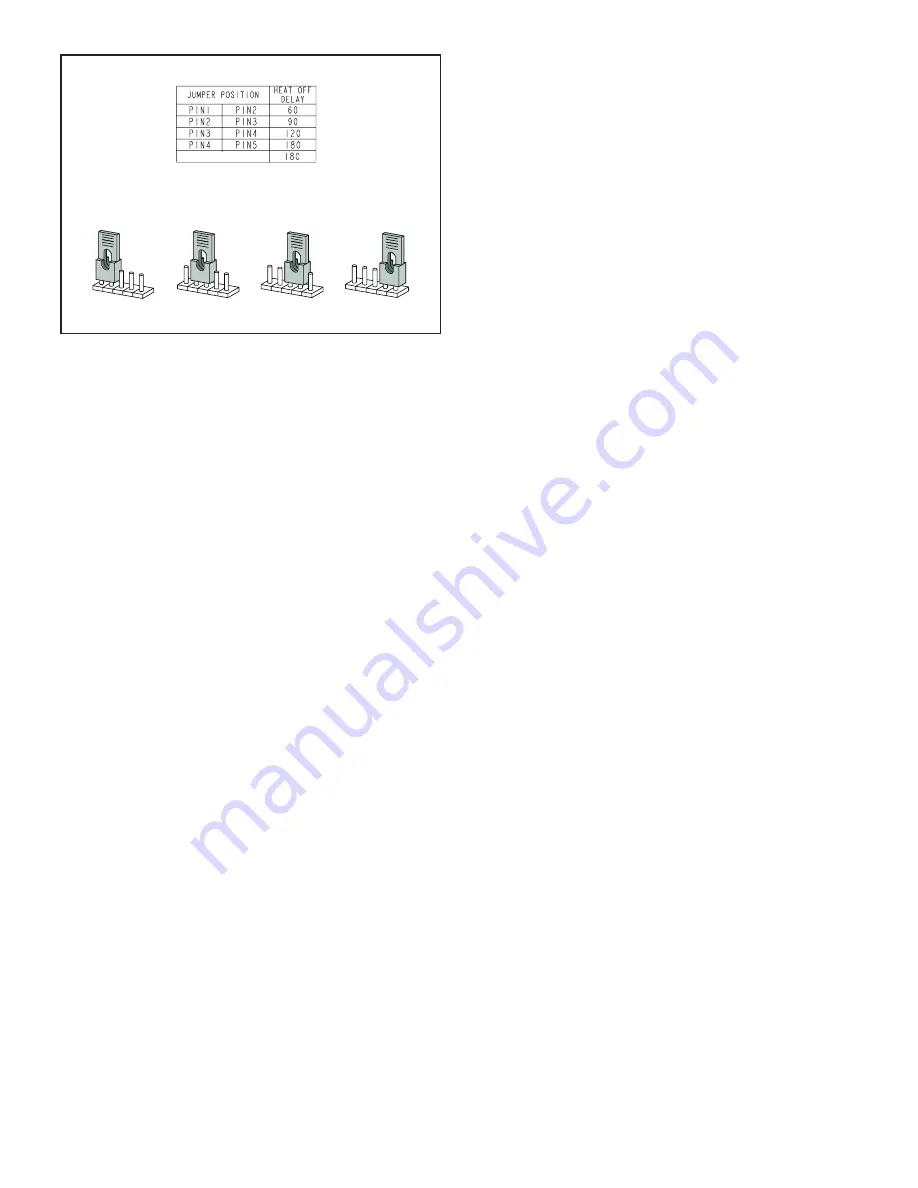
Page 25
HEAT FAN
‐
OFF TIME IN SECONDS
To adjust fan-off timing, reposition jumper across pins to
achieve desired setting.
NO JUMPER
60 90
120 180
60 90
12
0
180
60 90
12
0
180
60 90
12
0
18
0
60 Second
off Time
90 Second
off Time
120 Second
off Time
180 Second
off Time
FIGURE 23
Blower Speeds
Follow the steps below to change the blower speeds.
1 - Turn off electrical power to furnace.
2 - Remove blower access panel.
3 - Disconnect existing speed tap at integrated control
speed terminal.
See unit Product Specifications Manual for indoor blower
data.
NOTE -
Termination of any unused motor leads must be
insulated.
4 -
Place unused blower speed tap on integrated
control “PARK” terminal or insulate.
5 - Refer to blower speed selection chart on unit wiring
diagram for desired heating or cooling speed. See
Blower performance data beginning on the next
page.
6 - Connect selected speed tap at integrated control
speed terminal.
7 - Resecure blower access panel.
8 - Turn on electrical power to furnace.
9 - Recheck temperature rise.
Twinning 2 ML180DF Furnaces
The control board in this furnace is equipped with a provi-
sion to ”twin” (interconnect) two(2) adjacent furnaces with
a common plenum such that they operate as one (1) large
unit.
When twinned, the circulating blower speeds are synchro-
nized between the furnaces. If either furnace has a need
to run the blower, both furnaces will run the blower on the
same speed. The cooling speed has highest priority, fol-
lowed by heating speed and fan speed.
Field installation of twinning consists of connecting wires
between the ”C” and ”Twin” terminals of the two controls.
The 24 VAC secondary of the two systems must be in
phase. All thermostat connections are made to one con-
trol only. Figure 24 show wiring for two-stage and single
stage thermostats.
The twinned furnace without thermostat connections is
to have the call for heat supplied by an external 24VAC
isolation relay to prevent its rollout switch from being by-
passed by the other twinned furnace. The coil of the iso-
lation relay connects from the thermostat ”W” to 24 VAC
common. The contacts of the relay connect ”R” to ”W” on
the non-thermostat twin.




































